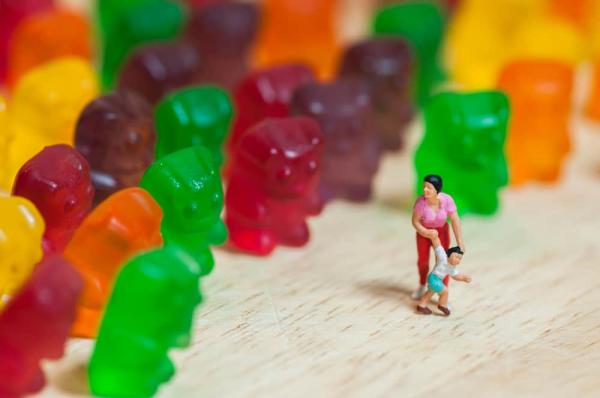
'Tis the season for candy. Halloween fast approaches, followed by Christmas, Valentine's Day, Easter and so on. Even if you don't participate in holidays celebrated in the U.S. and other countries, children are often given candy at birthday parties and as rewards or prizes. It's no coincidence that candy is at children's eye level in most checkout aisles at grocery stores. I've been the frazzled mother who spends a dollar on a candy bar just to get out of the store without a tantrum. Enough is enough.
If it's time for a candy intervention, use these 10 ideas to get you started.
Don't buy it
Unrealistic? Maybe, but I thought I'd throw it out there. I have found, however, if I don't buy candy for my children, I'm one less source. Develop unbending willpower and breeze right by the candy next time you're at the store.
Hide it
One of my favorite tricks is hiding my children's candy. "Out of sight, out of mind" truly works. When kids bring home a bag of candy from a party, I let them eat a few pieces and then stash it where they can't see it or reach it. More often than not, they forget about it and I can discreetly dispose of it after a few days.
Change traditions
The Easter bunny doesn't need to bring a lot of candy. Instead, supply kids with books, bubbles, sidewalk chalk or art supplies. Valentines don't need to come with chocolate, they can be accompanied with another small gift or a pack of sugar-free gum. It may take time for changes to catch on, but soon your family will be on board.
Train taste buds
This method has worked in our home, but also backfired. I started giving my children dark chocolate instead of super sweet milk chocolate, but now every time I have a piece of nice, expensive dark chocolate, they all want a taste! My 7-year-old daughter often comments that she didn't finish a treat because it was too sweet.
If you reduce the amount of sugar and candy your kids eat, their taste buds might adjust. Studies show that kids crave super sweet foods and are hardwired to do so from birth, so this idea is worth consideration.
Find alternatives
Most kids love candy and sweet treats, so finding treats that satisfy without rotting teeth is important. Fruit is actually very sweet. Dark chocolate covered strawberries, berries with a little bit of sweetened whipped cream and dried fruit are all suitable substitutes for candy. Other ideas include trail mix with a little chocolate, homemade fruit leather, frozen bananas dipped in peanut butter, frozen Greek yogurt bites (choose a brand with low sugar) or adding just a handful of a favorite candy to a bowl of fiber-filled popcorn.
Set an example
Kids like to mimic their parents' behaviors. Set a good example by not bingeing on candy. When we have movie night, we often split two boxes of candy between all six of us, keeping track of serving sizes and calories. I can't say no to my kids when they ask for candy while I'm eating my favorite dark chocolate peanut butter cups. Consider how your own cravings and habits are influencing your kids, and then adjust if needed.
Teach moderation
Your children might not be too happy if they don't get to eat any of their Halloween candy or their Easter eggs are full of carrot sticks. Some candy is OK. Bite-sized treats are perfect for controlling portions. Allowing just one or two after a healthful meal will send a message that treats are to be enjoyed - but in moderation.
Set a time limit
About a week after a major candy holiday, I gather the kids together and let them have five minutes to eat a few more pieces of candy, and then we throw the rest away. You can also set a time limit on the calendar. For example, circle a date on the calendar that lets the kids know all candy is thrown away or donated after that date. Doing this allows kids to enjoy some of their candy, but not consume the extra fat and sugar for weeks at a time.
Blame someone else
If my kids are begging for candy and wanting more than they should, I sometimes pass the blame to someone else. Saying something like "Your dentist asked me to help you keep your teeth healthy by not eating too much candy," or "Your coach wants you to be able to run fast and play with a healthy body this week, so we'd better put the candy away" encourages children to think about how what they eat affects their health.
Check your calendar
Stores are notorious for putting out holiday items long before the actual holiday. Don't buy candy in advance unless you have incredible willpower. Wait as long as possible to purchase candy so you don't find your family eating it before the holiday or occasion occurs.
Kids and candy go together, it's true, but as childhood obesity continues to be an epidemic and candy marketers get savvier, it's up to parents and caregivers to help kids develop healthy attitudes toward candy. Use these tips in your home to save your kids from cavities and cravings.

